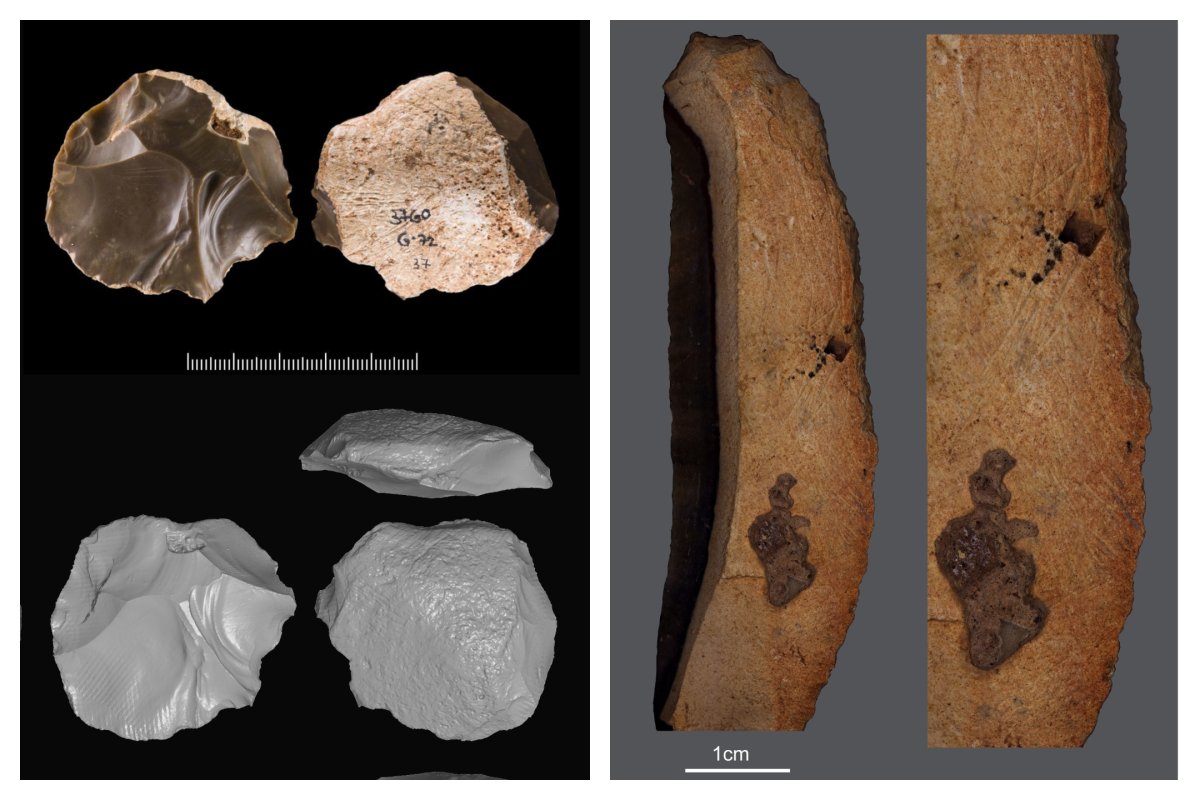A set of Stone Age artifacts have revealed evidence of advanced cognitive and symbolic behavior among prehistoric humans, a study reports.
In the study, published in the journal Archaeological and Anthropological Sciences, a team of researchers has demonstrated that stone artifacts found in certain caves in the Levant were deliberately engraved with geometric patterns.
The findings cast new light on the behavior of Paleolithic hominins, providing important new insights into the development of abstract thinking and cultural complexity in this period.
The Paleolithic (or Old Stone Age) was the earliest and longest phase of human prehistory, lasting from about 3.3/2.5 million years ago to roughly 12,000 years ago. The term "hominin" refers to members of the human lineage that includes our own species, Homo sapiens, and its closest extinct relatives.

Traditionally, there was skepticism about the existence of abstract or symbolic thought in early hominins. In this view, symbolic behavior, such as art and abstract expression, only emerged in our own species and relatively recently.
But over the past few decades, this perspective has been changing. There is increasing evidence to suggest that symbolic and abstract thought may have deep evolutionary roots and was not exclusive to modern humans.
In recent years, archaeological research has demonstrated the presence of abstract, non-utilitarian behavior among Palaeolithic hominins, for example. These findings have fueled discussions concerning the origin and implications of such complex behaviors. A key component in these discussions is the aesthetic and symbolic character of intentionally incised artifacts.
The latest study provides evidence of deliberate symbolic engravings during the Middle Paleolithic in the Levant, which roughly spanned from 250,000 to 45,000 years ago.
It involves an analysis of incised stone artifacts from key prehistoric archaeological sites in the region, including Manot Cave, Amud Cave, Qafzeh Cave and the open-air site of Quneitra.
Using advanced 3D surface analysis, the researchers examined the geometry and patterns of the incisions to distinguish intentional engravings from functional marks.
This work revealed that the artifacts from Manot, Qafzeh and Quneitra feature deliberate engravings, indicating symbolic intent. The engravings from the Amud Cave artifacts, meanwhile, were found to have no clear orientation or patterning, consistent with functional use as tools for wearing down, smoothing or polishing.
"Abstract thinking is a cornerstone of human cognitive evolution. The deliberate engravings found on these artifacts highlight the capacity for symbolic expression and suggest a society with advanced conceptual abilities," study lead author Mae Goder-Goldberger, with the Hebrew University and Ben Gurion University in Israel, said in a statement.
Do you have a tip on a science story that Newsweek should be covering? Do you have a question about archaeology? Let us know via science@newsweek.com.
Reference
Goder-Goldberger, M., Marreiros, J., Paixão, E., & Hovers, E. (2025). Incised stone artefacts from the Levantine Middle Palaeolithic and human behavioural complexity. Archaeological and Anthropological Sciences, 17(1). https://doi.org/10.1007/s12520-024-02111-4












)






)
 English (US) ·
English (US) ·